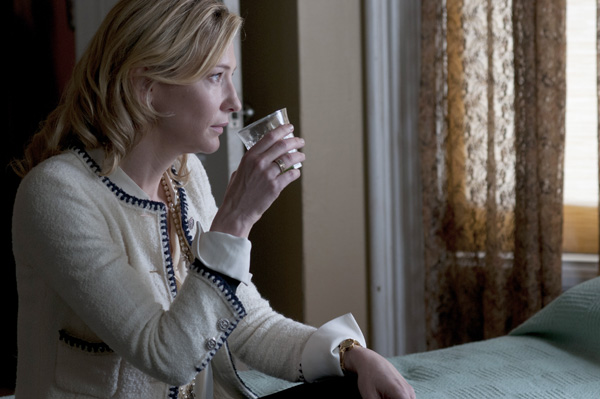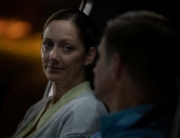![]() Spot the reference. That’s part of the appeal of movies heavily influenced by (or that borrow from) classic source material. In the recent British kitchen sink drama Broken, there’s the stand-in for Scout and not one but two false accusations of rape among other To Kill a Mockingbird droppings. Michael Winterbottom had better luck with his loose take on Thomas Hardy’s Tess of the d’Ubervilles in Trishna. He got everything right in his resetting of the morality tale to 21st century India, except he forgot to include a strong will for his title character.
Spot the reference. That’s part of the appeal of movies heavily influenced by (or that borrow from) classic source material. In the recent British kitchen sink drama Broken, there’s the stand-in for Scout and not one but two false accusations of rape among other To Kill a Mockingbird droppings. Michael Winterbottom had better luck with his loose take on Thomas Hardy’s Tess of the d’Ubervilles in Trishna. He got everything right in his resetting of the morality tale to 21st century India, except he forgot to include a strong will for his title character.
Woody Allen takes the framework and the neuroses (not played for laughs this time, as is his wont) of Tennessee Williams’ 1947 landmark play A Streetcar Named Desire for Blue Jasmine. Even if you have only heard about its stage history, or even the 1951 film, you will be more than vaguely familiar with its triangle: a dejected but defiantly proud and caustically judgmental older sister, Jasmine (Cate Blanchett), comes to live with her modest, introverted sister, Ginger (Sally Hawkins), and drives a wedge between Ginger and her boorish boyfriend, Chili. Jasmine’s a former member of the one percent, gone bust in a financial scandal. She has nowhere else to go (though she did fly first class from the east coast).
Tennessee Williams’ heroine, Southern belle Blanche DuBois, might be greatly relieved that Allen doesn’t take liberties with her kindred spirit, Jasmine. Yet Allen never slavishly follows Williams’s blueprint. He allows his characters to roam freely, and consequently they take on lives (and misadventures) of their own. Perhaps what makes Blue Jasmine so independent is that the setting has migrated away from the hotbed humidity of New Orleans. Instead, the script flashes back and forth between moneyed Manhattan and San Francisco, yet not in the postcard neighborhoods. Ginger lives in the most charmless block in the Mission District, though Allen does thrown in some breathtaking views of San Francisco Bay, mostly from across the Golden Gate.
Williams’s Stella, transformed here into a single mother of two, remains the loyal, patient sibling, but feistier. (As Ginger, Sally Hawkins still has the gangly traits from her most well-known role so far, Poppy in Happy-Go-Lucky.) The sisters don’t look at all alike; they were adopted from different parents. While Jasmine wears a Chanel suit specially designed for Blanchett by Karl Lagerfeld, Ginger’s wardrobe consists of jeans and T-shirts. She works as a grocery store cashier, though how she can raise a family and afford an apartment in that city is a question left for another time.
This is Blanchett’s richest role since Notes on a Scandal back in 2006, and though it’s still early, this will likely be the best-written and most layered female character in an American film this year. It gives Blanchett the chance to indulge in her patrician-like aura, whether that’s due to her bearing, crisp diction, her willowy clothes horse figure, or all of the above. In one of the numerous flashbacks, Ginger even curtsies to her sister. Previously, Blanchett hasn’t had such a mordant sense of humor onscreen. Granted, Jasmine usually has had a few martinis and swallowed a couple of anti-depressants. The actress also faces Jasmine’s demons head-on with no restraint. Her nervous breakdown scene is frightening. (Blanchett’s no stranger to this archetype, having played Blanche all over the world.)
With a new setting comes a different cultural overtone. Blanche, Southern through and through, clings to her family’s former wealth and prestige as a calling card. Along with that comes a lot of etiquette and coquettishness (that were probably out of date when Streetcar premiered on Broadway) and fond remembrances of the magnolia-scented family home. Jasmine is of the here and now, as consumer-oriented as any reader of W or viewer of Project Runway. Her wealth and sense of entitlement derive from her marriage to Hal (Alec Baldwin), a financier of some kind. In college, she reinvented herself, changing her name from Jeanette. Her last name is, well, whatever she wants it to be, depending with whom she’s talking, and she continues to repackage herself. She passes herself off as a widowed interior designer when she meets an available doctor, Mitch, er, I mean Dwight (Peter Sarsgaard).
Is Jasmine as highfalutin poetical as Blanche? Hardly, though she can hold her own in self-centered conversations in which she relives her past life on Park Avenue and summering in the Hamptons. She’s more of a grand hostess than a coquettish charmer, and her dialogue is straightforward, though not necessarily trustworthy. Like Blanche, Jasmine spins her own version of the truth—to save face, from self-delusion, or maybe, just maybe, in fear of facing the causes of her altered circumstances.
Allen brings the focus back to Jasmine-as-Stella, sideling the Stanley Kowalski stand-in. Woe to any actor that tries to compete with the ghost of 27-year-old Marlon Brando’s Stanley, and Allen mercifully takes the weight off of Bobby Cannavale’s shoulders. His brutish charisma is more disarming and less of a sexual threat—actually harmless and goofy. Chili acts like an aging Jersey Shore reject, the type of guy who speaks loudly at the bar and buys everyone drinks. So in other words, Allen doesn’t go as dark as Williams. Whew.
His take is lighter and more pragmatic than his adventures in Ingmar Bergman-land in the 1980s, as in September, where the sense of regret took precedent over everything else. He strategically has his characters toss a one-liner here and there—Jasmine to no one in particular: “Who do I have to sleep with to get a Stoli with a twist?” And with its clean production designed by frequent collaborator Santo Loquasto and a soundtrack of the American songbook (including “Blue Moon,” the song that was playing when Jasmine met her husband), this is unmistakably a Woody Allen film.

















Leave A Comment